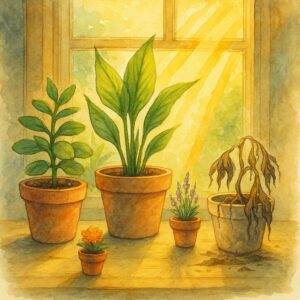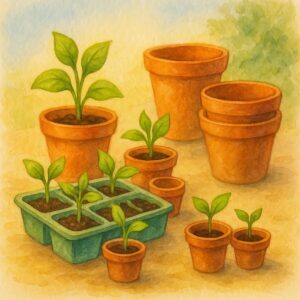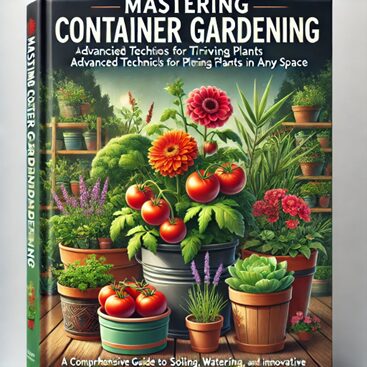Container Gardening Seed Starting Timeline: 9 Foolproof Hacks for Dummies (No PhD Required!)
Affiliate Disclaimer
This post contains affiliate links. If you purchase through these links, I may earn a small commission at no additional cost to you. This helps support the creation of more helpful content. Thank you for your support!
Discover the Power of Container Gardening
Intro: Why Your Seed Starting Timeline Needs More Love Than Your Netflix Queue
Let’s face it: starting seeds for container gardening can feel like herding cats. One wrong move, and you’ve got leggy tomato seedlings moonwalking toward death or zucchini plants staging a coup in your 2-inch pot. But fear not! This Container Gardening Seed Starting Timeline guide is here to rescue you from chaos. We’ve packed 25 laughably simple hacks (no lab coat required) to turn your balcony into a veggie paradise.
Starting seeds indoors for container gardening allows you to extend the growing season, nurture delicate plants, and enjoy a wider variety of crops. Spoiler: You’ll learn why frost dates matter more than your ex’s birthday and how to avoid raising “zombie seedlings.” Let’s dig in!
In This Article
- Hack #1: Frost Dates Aren’t Just for Snowmen
- Hack #2: Be a Seed Snob (Not All Packets Are Created Equal)
- Hack #3: Your Container’s Size Matters
- Hack #4: Soil = Seedling Tinder (Swipe Right for Sterile Mix)
- Hack #5: Light = Life (Or, How to Avoid Raising Plant Zombies)
- Hack #6: Watering Is a Love Language (But Your Seedlings Need Space)
- Hack #7: Transplanting & Hardening Off (Or, How to Avoid Plant PTSD)
- Hack #8: Avoid These Oopsies (Or, How to Not Murder Your Seedlings)
- Hack #9: Fall & Winter Gardening
Hack #1: Frost Dates Aren’t Just for Snowmen
Your Container Gardening Seed Starting Timeline begins with one magical phrase: last frost date. Think of it as gardening’s version of “Survivor”—plant too early, and your seedlings get voted off the island. Use NOAA’s frost date tool to find yours. Most seed packets specify “start indoors X weeks before last frost.” For example, tomatoes need 6–8 weeks, while broccoli needs 9–12 weeks.

Hack #2: Be a Seed Snob (Not All Packets Are Created Equal)
Your timeline lives or dies by one thing—reading the dang seed packet. Think of it as Tinder for plants: Swipe left on generic advice, and swipe right on the specific “Start indoors 6–8 weeks before frost” drama. Tomatoes and peppers are divas needing 8 weeks of indoor pampering. Basil and cucumbers are chill—3 weeks and they’re ready to party.
Hack #5: Light = Life & Hack #6: Watering Is a Love Language
Light isn’t optional—it’s the Beyoncé of plant care. Skimp on 14–16 hours daily, and your seedlings will morph into leggy, pale “vampire plants.” Use LED grow lights 2–4 inches above seedlings for an instant glow-up. When it comes to watering, don’t be a stage-5 clinger. Overwatering drowns roots. Bottom-watering trays are the therapists here, keeping soil moist without the soggy melodrama.


Hack #9: Fall & Winter Gardening
Think gardening ends with summer? Honey, kale and spinach didn’t get the memo. Your seed starting timeline isn’t just a spring fling. Start cool-season crops like kale and spinach 8–10 weeks before the first fall frost. Start indoor herbs like rosemary and thyme in January, and they’ll thrive all year long.
Conclusion: Your Seed Starting Timeline = Plant VIP Access
Congrats, green thumb rookie! You’ve survived the seed starting gauntlet. Follow these hacks, and you’ll morph from “I killed a cactus once” to “I grew a tomato in a coffee can” faster than you can say chlorophyll. Your timeline isn’t a rulebook—it’s a permission slip to play in the dirt. So go forth, laugh when your mint stages a jailbreak, and eat a salad that you didn’t overpay for at Whole Foods.

Leave a Reply